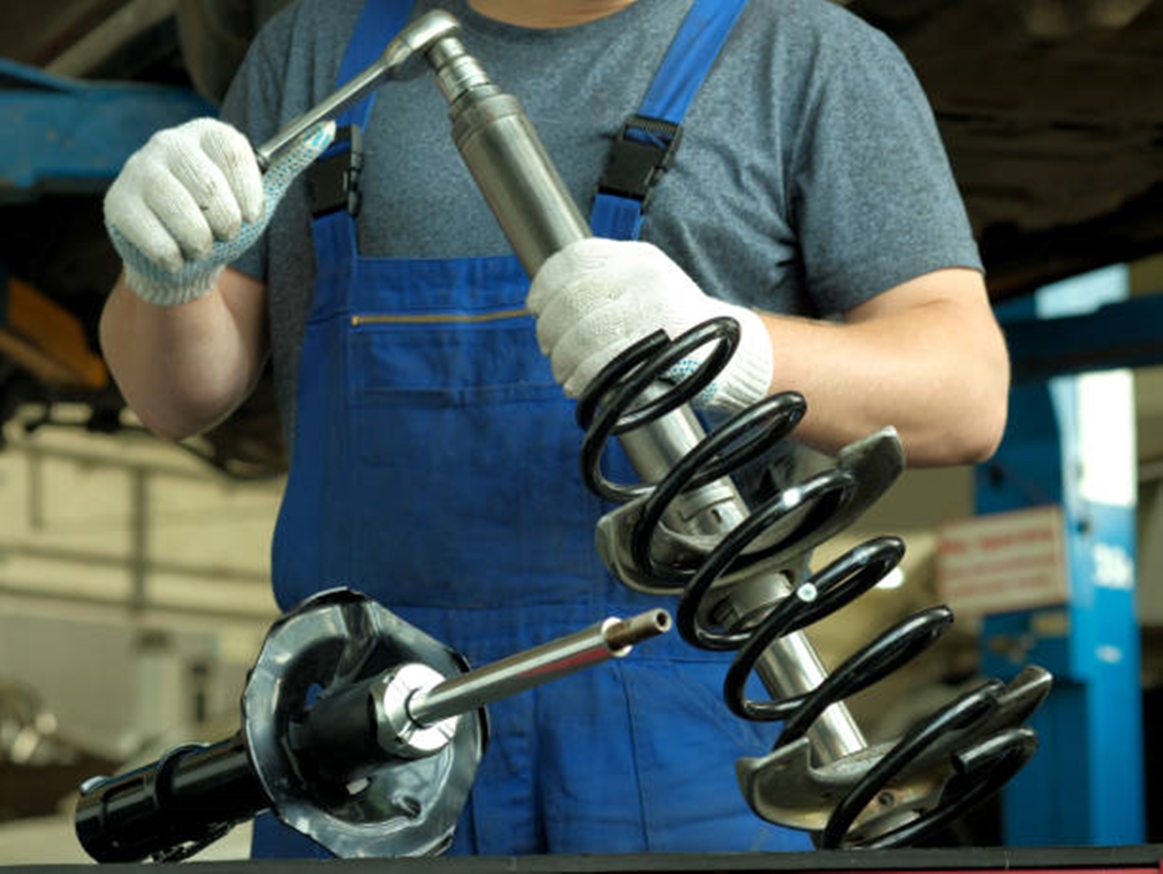What do shock absorbers do?
Shock absorbers do two things; first and foremost, they help to control the movement of the springs and suspension. Secondly, they ensure your tyres make contact with the ground, giving you optimal grip. Whether you’re moving or stationary, the patch of tyres that contact the ground is really the only part that touches the ground. If your shock absorbers are not working well, it may reduce this contact, affecting your ability to accelerate, brake, steer, or even drive in a straight line.
Many people think that shock absorbers are designed to support the weight of the vehicle. However, this is not entirely true.
For a better understanding, you need to think of the science behind the shock absorbers. When you observe shock absorbers, what comes to mind about the kinetic energy of movement, and how the shock absorber turns the energy into heat or thermal energy that must be dissipated in an exchange mechanism.
If you understand how an oil pump works, you can understand easily how what a shock absorber does. Each piston function by the piston rod working with the hydraulic fluid to create pressure within the enclosing tube.
In your suspension, as it goes up and down, it forces hydraulic fluids to flow through tiny holes within the pistons. The tiny hole provides resistance to the hydraulic fluid, slowing down the movement of the piston. The slowing down of the piston, in turn, slows down the suspension and springs.
Owing to this mechanism, the shock absorbers play a vital role in adjusting the tires to various road conditions, especially when moving at higher speeds and encountering resistance. If you’re reading this from the UK, I recommend exploring ‘UK shock absorbers’ to find reliable options. You may even come across a sale on shock absorbers, which can help you save money while ensuring the safety and performance of your vehicle.
The Variety of Shock Absorbers Available
Shock absorbers operate under the same mechanism, regardless of the suspension design of the vehicle. However, there is an array of shock absorber designs.
Regardless of the shock absorber application, the shock absorbers are designed to fit in either of three scenarios, including being used in a struts and shock absorber.
1. Conventional Telescopic Shock Absorbers
The conventional telescopic shock absorbers are the simplest version of this device. Owing to their simple designs and their cost-effectiveness, they ensure it is easy to maintain and repair your vehicle. You can simply replace it. They are used in both the front and the rear suspension systems.
2. Strut-Type Shock Absorbers
The strut-type shock absorber functions in a similar way to other shock absorbers. However, it is designed to be placed on the struts, as the name suggests, and replaces part of the suspension system. This shock absorber is typically used in vehicles that experience greater loads and face greater forces, such as large and medium-sized vehicles, which experience greater loads and forces, whereas strut-based offer better performance under immense loading. Importantly, this shock absorber system can be used in both the front and rear suspension systems.
The category of strut-based shock absorbers, shock absorbers can be divided into repairable and sealable units. When a sealable unit gets damaged, it must be replaced entirely. On the other hand, the repairable, also known as McPherson Struts, can be repaired by replacing the strut cartridges. As such, the repairable tend to be more cost-effective in the long run. They are a better option, especially if you have the skills to do DIY repairs.
3. Spring Seat Shock Absorbers
The spring seat shock absorbers operate using a similar mechanism as the aforementioned strut type and telescopic shock absorbers. Like the other shocks, the spring functions as a dampening device. However, it is made as a single unit. However, the spring seat shocks are not designed to operate with high-sided loads and forces.
